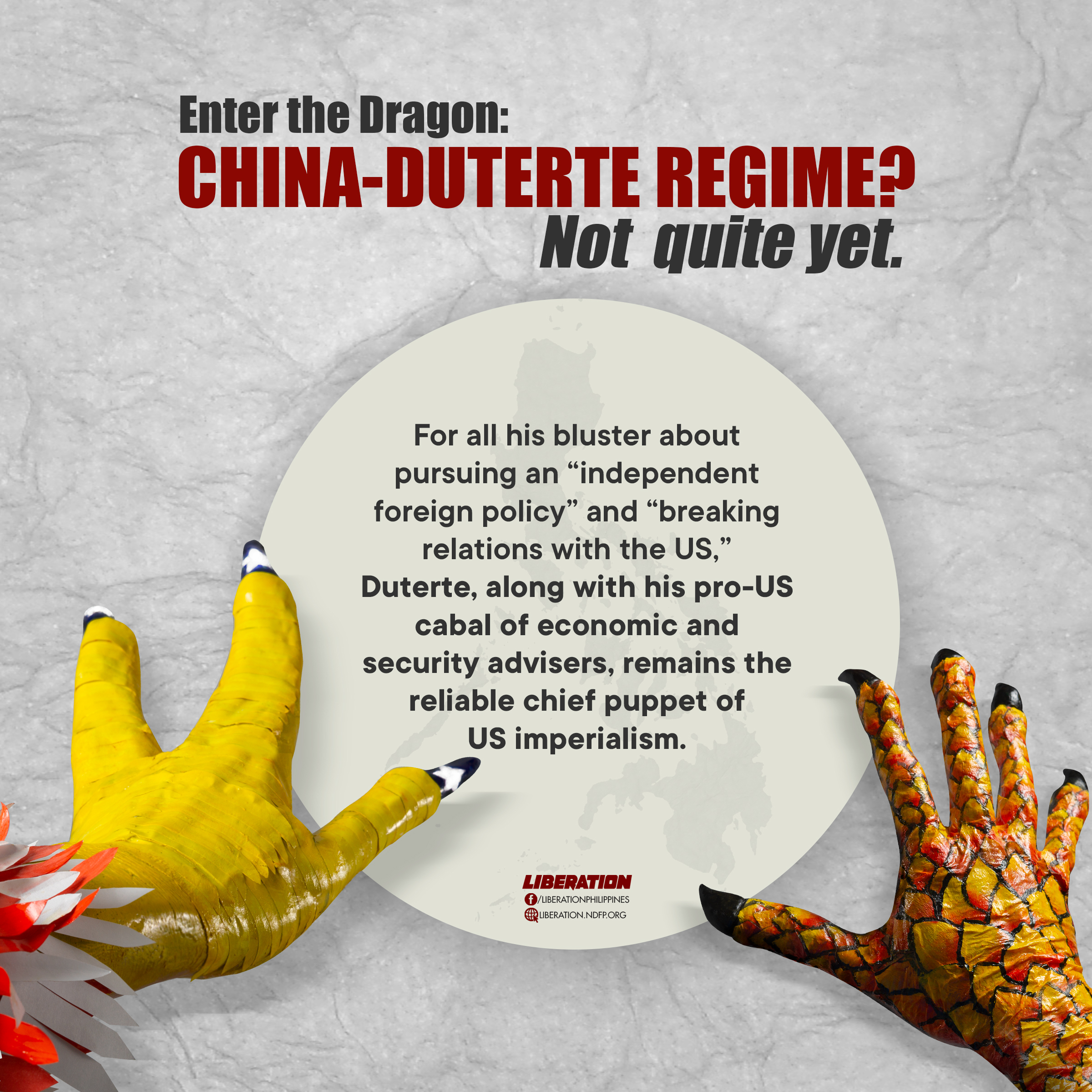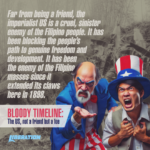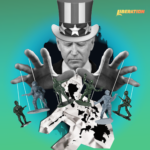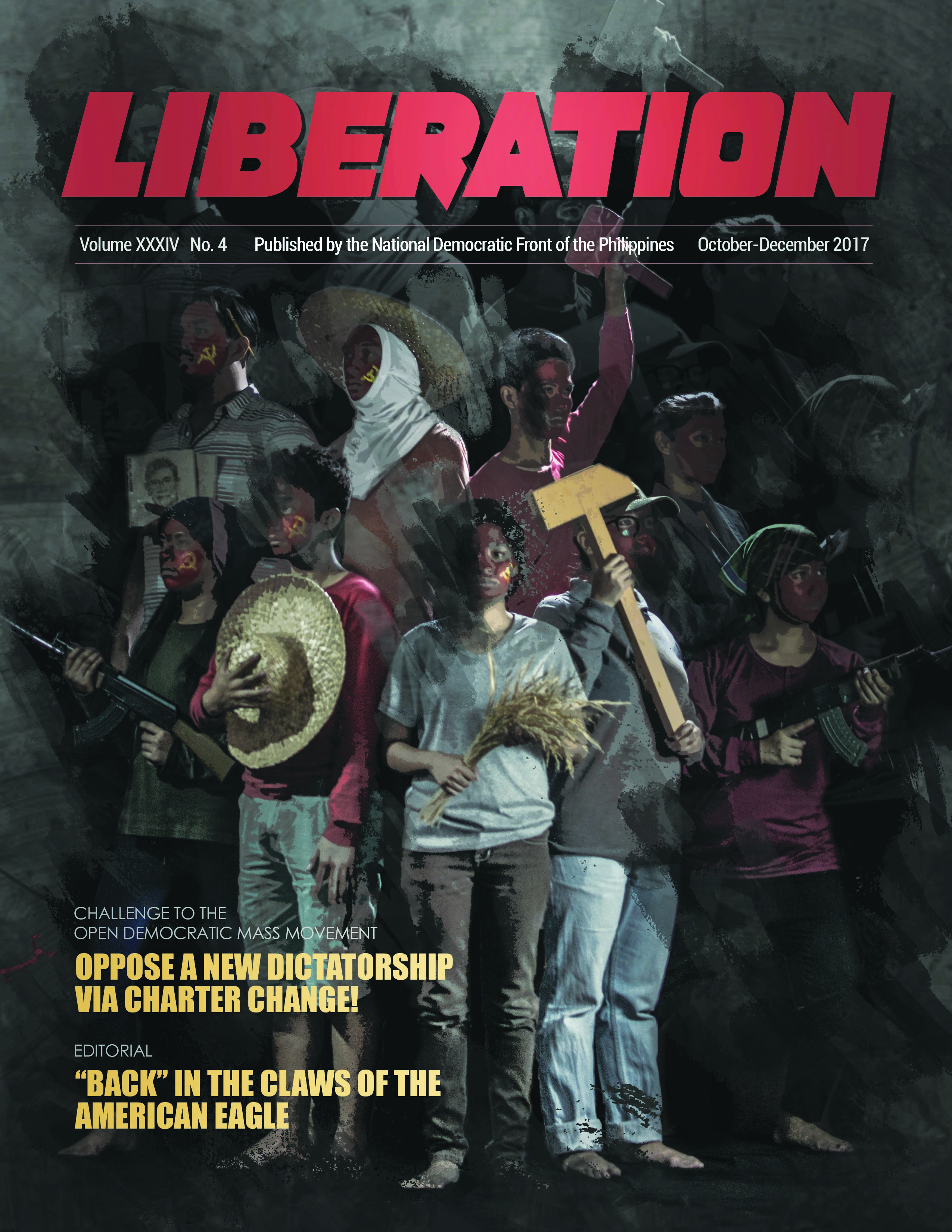Enter the Dragon: CHINA-DUTERTE REGIME? NOT QUITE YET

by Vida Gracias
There is a growing perception that President Rodrigo Duterte is already distancing his administration from the United States and increasingly cozying up to China. Is it now apt to assume that a China-Duterte rather than a US-Duterte regime is shaping up?
Consider the following:
- Duterte has indefinitely set aside the Permanent Court of Arbitration’s August 2016 ruling that upholds the Philippines’ sovereign rights over its exclusive economic zone (EEZ) in the West Philippine Sea and negates China’s so-called nine-dash-line sovereignty assertion over almost the entire South China Sea.
- The Duterte government has not protested China’s rapid construction, militarization, and occupation of artificial islands within the Philippine EEZ, largely seen as a “creeping Chinese invasion.”
- Duterte is also practically conceding to China a large part of the country’s oil, gas and other natural resources in the West Philippine Sea through an offer of joint exploration with a 60(Philippines)-40(China) sharing arrangement.
- While China has supposedly agreed to grant the Philippines billions of dollars in loans and aid, this entails us paying an interest rate 3,000% higher than what Japan has offered.
- A large influx of Chinese nationals has been entering the country, many of whom have been caught engaged in the illicit drug trade, online gambling and other dubious activities.
- Duterte has repeatedly been publicly quoted as declaring: “I will not go to war with China.” He has even joked about the Philippines “turning into a province of China”. He continues to regard China’s leader Xi Jinping as a “man of honor” even as the latter has reneged on his promise not to build military structures on the contested reefs in the West Philippine Sea.
Undoubtedly China is a rising imperialist power challenging the U.S military and geopolitical dominance in the Asia-Pacific region, with designs over the Philippines not just to exploit its natural resources, trade and investments but also its strategic geographic location in the region.
China is delighted that Duterte has opted to develop warm relations with it, in contrast to his predecessor, Benigno Simeon Aquino III, who took China to court over the maritime disputes in the West Philippine Sea. However, more than two years into the Duterte presidency, and despite China’s increasing economic influence here, it is quite far from dislodging the US as the No.1 imperialist power in the country’s internal and external affairs.
The fact remains that, for all his bluster about pursuing an “independent foreign policy” and “breaking relations with the US,” Duterte, along with his pro-US cabal of economic and security advisers, remains the reliable chief puppet of US imperialism. His tirades and insults against the US sound no more than the cry of a spoiled brat, resenting the latter’s criticisms of his bloody “war on drugs” and tying up measly military assistance with human-rights conditionalities, against which he is most sensitive.
Duterte’s overtures to China and Russia – both welcomed with open-arms by the latter hitherto “enemy” powers — are calculated and calibrated risks at the expense of Philippine sovereignty. He is currying favors from the two powers to gain more support in both his bid to build up his regime’s military capability and to expand trade relations. It may appear that he is playing off one imperialist power against another, but shrewd Duterte knows where his bridges could be burned.
He cursed former US President Barack Obama, calling him “son of a whore,” because the latter had criticized his brutal war on drugs. He reacts vehemently whenever his dismal human rights record is riled, then threatens to veer away from the US (“I will scrap the VFA and EDCA!” “Out with the American Special Forces in Mindanao!” “Stop the Balikatan exercises!”). He would rake up old hurts, both personal (“I was abused as a child by an American Jesuit;” “I was not allowed entry by US immigration”) and political (“Return the Balangiga bells!” “Remember the Bud Daju massacres!”).
U.S. MILITARY ASSISTANCE
Yet, when US President Donald Trump came into power and praised Duterte, the latter’s verbal attacks started to wane. Trump promised Duterte increasing military assistance under the recycled “Operation Enduring Freedom” of George W. Bush, renamed as “Operation Pacific-Eagle Philippines.”
This came at about the time US military planes and drones provided aerial-bombing “assistance” in the five-month Marawi war beginning in March 2017, far eclipsing the China aid of 2,000 AK47 rifles, and for which Duterte was fulsomely grateful. This gave the US further reason to intervene in Duterte’s “anti-terrorist” campaign and revved-up counterinsurgency program. The succeeding days saw Duterte canceling the GRP-NDFP peace talks and the AFP carrying out an “all-out war” against the CPP-NPA.
Quite a number of times during Duterte’s two-year rule, the US turned over loads of war materiel (carbines, pistols, machine guns, grenade launchers, etc.) to fight terrorism and insurgency. Its US Special Forces have remaained in Mindanao since 2009, disregarding Duterte’s pronouncements in 2016 that they should leave. Obviously, while Duterte’s foul mouth and downgrading of the US may have ruffled some feathers, US officials didn’t take his outbursts seriously.
Because beneath his rants run long-held institutional ties and abject Philippine subservience to the US, Duterte cannot feign ignorance of US control over the Armed Forces of the Philippines. Since its inception, the AFP has been trained, armed, and aided by the US. US military presence dates back to 1898 and continued after the US “grant” of Philippine independence in 1946. The 1951 US-RP Mutual Defense Treaty remains in effect.
“From January 1, 2017 to the present, US grants funded the delivery of military equipment worth over Php 5 billion (U$95 million) to the Armed Forces of the Philippines,” the US Embassy was quoted in an Inquirer.net news report on August 16. The military equipment included unmanned aerial vehicles, armored vehicles and planes, surveillance platform for the military’s C-130 cargo transport planes.
In the same news report, the US embassy claimed, “The Philippines is by far the largest recipient of US military assistance in the region (Asia-Pacific), supporting the AFP’s modernization goals through a variety of programs and initiatives.”
Before Duterte cuddled with China, his patriotism was suspect. While lambasting the US he took no action to scrap the Visiting Forces Agreement (VFA) and the Enhanced Defense Cooperation Agreement (EDCA), as he had vowed to do. By their own account, about 8,000 US troops and Filipino soldiers participate in the annual Balikatan exercises as part of these agreements. Though the Supreme Court has upheld these agreements as constitutional, it is within his executive powers to initiate their termination. He can also coax his allies in the Senate to facilitate the process.
Duterte may appear like he is his own person but the US surely gets its way and sets the direction of his administration’s policies. Oftentimes he would rely on his national defense chief, his national security adviser and his coterie of generals for decisions such as the bombing of Marawi, the declaration of martial law in Mindanao, and the termination of the peace talks with the NDFP. He has also publicly acknowledged that the security cluster in his cabinet, including his economic team, are “AmBoys” and that he does not interfere in their work.
The American presence is all over town, so to speak, and most potent in the military. The US holds the largest military complex in all of Southeast Asia. No other imperialist country, not even China, can match it for now. Even in the economic arena, China’s strength in the Philippines has yet to be felt compared to other foreign trade and investment partners. What Duterte achieved in his trips to China and meetings with Xi Jin Ping are still mere pledges and agreements. Though worth billions of dollars, these have yet to come to fruition.
NEOLIBERAL POLICIES
While the US has become only next to Japan in terms of trade and investments in the Philippines, US interests are substantial enough to effect the further liberalization of the economy.
From 2007 to 2017, US investments in the Philippines amounted to US$4.26 billion compared to China’s US$84.74 million. Direct trade with the US also reached US$168.58 billion from 2006 to 2016. In May 2018, Forbes.com reported no major investments by China in the Philippines despite warm relations. The bulk of investments in 2017 came from traditional trading partners such as US, Japan and the Netherlands as well as Singapore and Hong Kong.
Trump’s meeting with Duterte in Manila last year also kicked off negotiations for a bilateral free trade agreement between the two countries. This comes along well with the charter change proposals pending in Congress to lift economic restrictions for foreigners such as granting them 100 percent ownership of land and public utilities.
With the US holding a tight grip on the country, specifically on the military, Duterte can only remain subservient to US imperialism. The regime will remain US-Duterte whether or not it suits him. He can trash talk the US all he wants, but any false move risking relations with the imperialist power could cost his presidency, even his life – as he himself has been saying lately. He could go on playing his China card against the US, but this won’t change his being a chief US puppet. Yet it can make him a China lackey, too.
If he pursues his double-dealing scheme, he would also double the whirlwind he would soon reap. Certainly, the Filipino people will not sit by idly as Duterte trades the country to his old and new foreign masters.







